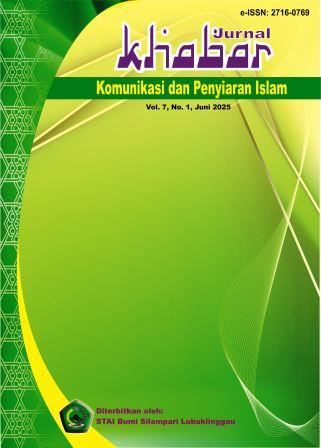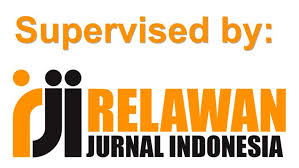Pesan Komunikasi Interpersonal Dalam Film Bila Esok Ibu Tiada Karya Nagiga Nur Ayati Terhadap Nilai-Nilai Relasi Ibu Dan Anak
(Analisis Semiotika Ferdinand De Saussure)
DOI:
https://doi.org/10.37092/khabar.v7i1.1176Keywords:
Interpersonal communication, Values of Mother-Child Relationship, Semiotics of Ferdinand De SaussureAbstract
This study analyzes the interpersonal communication message of the film if the mother is not there tomorrow by Nagiga Nur Ayati using the semiotic approach of Ferdinand de Saussure. The focal point of this study is to identify and interpret the values of mother-child relationships. The type of research used is qualitative descriptive using Ferdinand de Saussure's semiotic analysis method, this study examines verbal and nonverbal signs that represent deep meaning in the relationship between mother and child. In obtaining this research data, the author made direct observations of the film, and used several secondary data sources in the form of scientific articles and journals that discussed Ferdinand de Saussure's semiotic concept. The results of the study show: the film If Tomorrow the Mother does not show the message of the values of the relationship between mother and child, about the affection of a mother to her child, the sacrifice of a mother to her child, the protection of the child is her own mother, and also the first education that the child gets is her own mother and father. This film conveys the message of the meaning of sincerity, patience, and the importance of openness in family communication.
Downloads
Downloads
Published
How to Cite
Issue
Section
License
Copyright (c) 2025 Zikri Ramadhani, Faridah Faridah

This work is licensed under a Creative Commons Attribution-NonCommercial-ShareAlike 4.0 International License.









